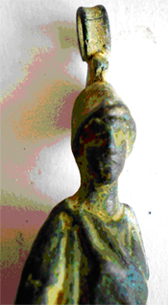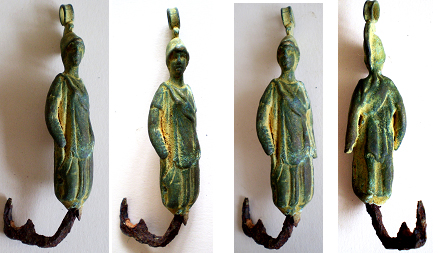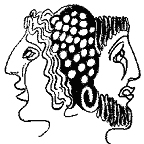The Romans’ religious beliefs encompassed everything. They had gods to help and support every task. The gates, locks and keys of Rome were protected by the two-faced Janus.
The goddess Minerva
 Her name is related to the Latin word manas, consciousness, or mens, the mind. Minerva was imported from the Etruscans, who knew her as Menvra, Menrfa, Meneruva and Menerva. She may have originated among one of the ancient Italic peoples. The Etruscans saw her as a goddess of thunder. Minerva is Rome’s equivalent to the Greek Athena and took over her personality.
Her name is related to the Latin word manas, consciousness, or mens, the mind. Minerva was imported from the Etruscans, who knew her as Menvra, Menrfa, Meneruva and Menerva. She may have originated among one of the ancient Italic peoples. The Etruscans saw her as a goddess of thunder. Minerva is Rome’s equivalent to the Greek Athena and took over her personality.
Minerva is the goddess of commerce, industry and schools. According to Roman tradition, the Cult of Minerva was born in the Etruscan city of Falerii northwest of Rome. When the Romans conquered the city in 241 BC, they brought home the sculpture from the temple on Mount Coelius, which was a shrine to her, and called her Minerva Capta. Rome already had a temple to Minerva on Aventine Hill.
Minerva was worshipped alongside Mars, the god of war, for five days called the Quinquatria (a holiday period beginning on March 19) in connection with the vernal equinox. Minerva was worshiped throughout the Empire, particularly by artisans, flutists and doctors. There is no purely Roman Minerva sculpture preserved. The Etruscans equipped her with wings and bearing an owl, the same bird associated with Athena.

 |
| Janus head from the 1920s. Sketch by the author. |